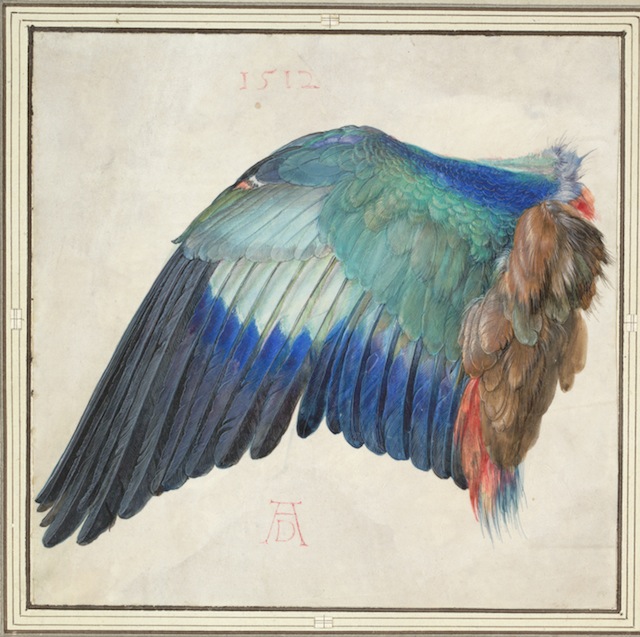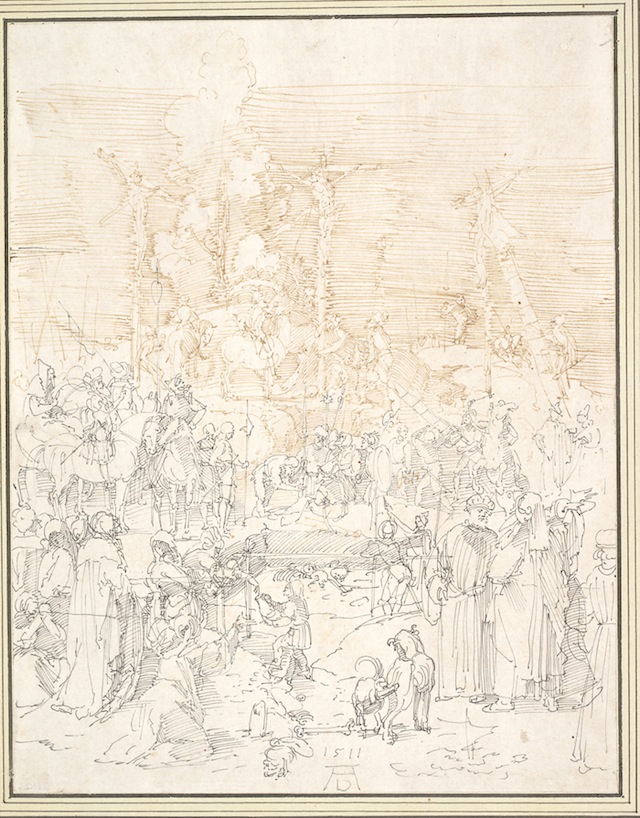When the Albertina’s Dürer show came to the National Gallery a few years ago, I got very interested in the way the drawings were framed. Inside their matting, each work on paper also featured an outline, one or two lines, drawn right on the sheet. Who did these and why, no one at the NGA could say. [UPDATE I HAVE BEEN FOUND OUT I DID NOT ASK THE CURATORS STAY TUNED] The accompanying catalogue had zero mentions, and reproductions all excluded these drawn frames. Photography was prohibited in the show, and the Albertina’s website images are worse than anything, so these marks made right on the face of these important artworks are treated as invisible or irrelevant.
[UPDATE: Oh hey, I found a bunch of photos I took anyway. Since the statute of limitations for not taking photos of 400-yo artworks is 3 years, and the rule of law is crumbling around us anyway, they’re after the jump.]
Obviously, drawings have been handled differently as art objects across the centuries. There’s probably at least one dissertation to be written about collectors and dealers and institutions marking up old drawings. Maybe it already has been, and just need to be unearthed.

Anyway, I thought of this practice when I saw William Poundstone’s report of the Getty Museum’s acquisition of a major collection of Old Master drawings. The haul includes a Michelangelo, and this Head of St. Joseph (1526-27) by Andrea del Sarto. Which is great, but check out the double-line frame drawn around it, the spandrels to hint at a round arch, and the nameplate added to the bottom.
When this drawing traveled to the Getty and Frick as part of a 2015-16 del Sarto show, the careful framing was attributed to none other than Giorgio Vasari, who had collected this work by his former teacher into Libro de’ Disegni, a drawings album. As Ingrid Rowland wrote:
In part because of his connection with Michelangelo, and in part because of his own ravenous curiosity, Giorgio Vasari was one of the first collectors to value drawings as legitimate works of art. He had taken to studying old master drawings as an aspiring artist, and when he gathered information about colleagues as an aspiring biographer for his Lives, he also sought out their drawings, binding them into a series of books. The books, unfortunately, have been lost, though isolated pieces survive.
So maybe there is something to be learned from these invisible framing devices after all.
The Getty’s Big Buy [lacmaonfire]
Sublime, Exhilarating del Sarto, review by Ingrid Rowland [nybooks]
Previously, related: Borderline


Ah, so I did write about this before after all. Borderline? Looks like I’m going to lose my mind. That’s where these first two images come from: Durer drawings mounted on larger sheets with concentric frames and decorations drawn around them, echoing, I noted, Durer’s own borders on his prints.

Same here, blue Venetian paper drawing mounted and outlined.

Did I remember them all wrong? Were they all just borders drawn on mounts? Was that some visual cue for the edge of the art?
